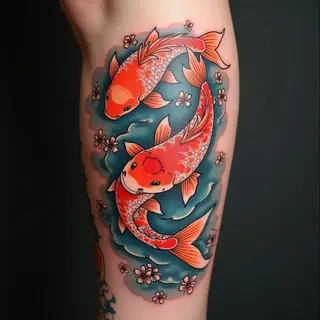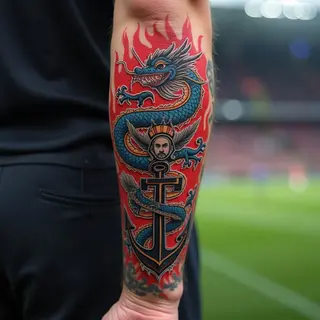Understanding the Meaning Behind Norse Tattoos
Norse tattoos are steeped in history and mythology, drawing inspiration from Viking culture, Germanic folklore, and ancient runic systems. These symbols carry profound meanings related to strength, protection, wisdom, fate, and the cosmos. Understanding these meanings is crucial for honoring the cultural significance of Norse imagery.
Common Norse Symbols & Their Meanings
**Common Norse Symbols & Their Meanings:**
Runes (Elder Futhark)
Each rune represents a concept or sound. They were used for divination and storytelling. Common choices include Fehu (wealth, prosperity), Uruz (strength, wildness), and Ansuz (wisdom, communication).
Mjolnir (Thor’s Hammer)
A symbol of protection, strength, and divine power, associated with the Norse god Thor.
Yggdrasil (World Tree)
Represents the interconnectedness of all life and realms in Norse cosmology. It signifies balance, growth, and knowledge.
Valkyries
Female figures who choose who lives or dies in battle – symbols of fate, honor and courage.
Odin’s Ravens (Huginn & Muninn)
Represent thought and memory - symbols of wisdom and insight.
Jormungandr (World Serpent)
Symbolizes chaos, destruction, and the cyclical nature of existence. It can also represent resilience and overcoming challenges.
Hel
Represents the realm of the dead – it may signify remembrance or acceptance of mortality.
Placement & Design Considerations
The placement of a Norse tattoo is significant. Common locations include the arm (strength), chest (courage), back (fate), and leg (journey). Designs often incorporate geometric patterns, knotwork, and traditional Viking art styles.
Cultural Sensitivity
It’s important to approach Norse tattoos with respect for their cultural significance. Researching the meanings behind symbols is essential to avoid misrepresentation or appropriation.
Resources for Further Learning
* The Saga Museum: https://www.thjodminnaskjo.is/en
* Norse Mythology by Neil Gaiman: A modern retelling of classic Norse myths.


